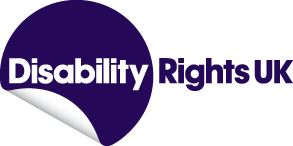Social Model of Disability: Language
The Social Model of Disability was developed by Disabled people and describes people as being disabled by barriers in society, not by our impairment or difference. If modern life was set up in a way that was accessible for Disabled people, then we would not be excluded or restricted.
The social model of disability helps us recognise barriers that make life harder for Disabled people. These barriers are identified as being the physical environment, people’s attitudes, the way people communicate, how institutions and organisations are run, and how society discriminates against those of us who are perceived as ‘different’. Removing these barriers creates equality and offers Disabled people more independence, choice, and control.
Language is an important part of the Social Model of Disability because language reflects the cultural assumptions and thinking of the society around us. Language is never purely descriptive - it shapes how we see each other, the value we place on different identities, and sometimes how we behave.
In the past, Disabled people were described in a way that reflected a negative or medical view of disability. These terms, such as ‘cripples’, ‘handicapped’ and ‘wheelchair bound’ reinforce a negative view of Disabled people and often show us as powerless ‘victims’ or ‘objects’.
However, Social Model language rejects this negative or medical language and replaces it with more positive language that sees us as human beings. For example, “Disabled person”, “wheelchair user” , and “person with learning disabilities”.
The Social Model of Disability states that people have impairments, they do not have disabilities. According to the social model of disability, the term ‘people with disabilities’ is said to confuse impairment and disability and implies disability is something caused by the individual, rather than society. A Disability is caused by society’s unwillingness to meet the needs of people with impairments. As a result, the term ‘Disabled people’ is used to describe people with impairments who are disabled by barriers constructed by society.
Using the word ‘Disabled’ before ‘people’ signifies identification with a collective cultural identity and capitalising the ‘D’ emphasises the term’s political significance. Using the term ‘Disabled people’ or ’Disabled person’ is therefore a political description of the shared, disabling experience that people with impairments face in society. It brings together a diverse group of people and helps to identify the causes of our discrimination and oppression, communicate shared experience and knowledge, and create social change.
Most organisations that work with disabled people relate to the language of the social model and use this at a policy level to help them to influence and improve rights for disabled people. However, at a more individual level some Disabled people may not relate to this language. It is therefore essential that organisations also engage in regular conversations with disabled people to find out an individual’s preference around disability and the use of language.
References
https://spectrumcil.co.uk/wp-content/uploads/2018/02/ULO19-The-Language-of-Disability.pdf
EducationEmploymentEquality & RightsHealth & Social Care
